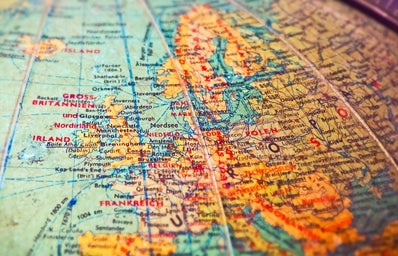This summer I participated in a study abroad program that traveled to Germany and France for two weeks with my university. During those couple of weeks I walked more miles than I have in my entire life, experienced five toe cramps and a Charlie horse in a single day, fallen asleep twice while having dinner, and was tsked at by busy looking locals because of my sloth-like movement. Despite the lack of sleep and sore body, I am able to say that those two weeks were the most fulfilling of my life thus far.
What made the experience great was learning how to adjust to all of the cultural lifestyles. I noticed differences between home and the two countries, so I decided to keep track and forward them on to other students considering studying abroad. So, without further ado: Be our guest, be our guest put your cultural expectations to the test!
1. Water isn’t actually free. Depending on how you ask. – Asking for water in the US means you’re getting a free drink with your meal. I usually do this when I don’t feel like paying two dollars or more for a same sized cup filled with brand drinks. Also, water is good for you. Asking for this basic human need in Germany and France means getting a nice glass bottle with a charge to the bill- that you won’t see till the end. To get free water you have to specifically ask for “tap” water. Another caveat is to not expect ice with your glass. It will be cold from being in a fridge or cooler. Lastly, if you do want water from that nice glass bottle be sure to say “still” water. For some reason sparkling water is very popular and it will be assumed that is the preference you want. It’s not. Unless it really is.
2. Drinking in Germany and France has a different level of tolerance and acceptance that isn’t the same as the US. – Germany’s legal drinking age starts at 16 and then 18 for spirits. France’s legal drinking age is 18 for all alcoholic beverages. While these are the laws, the “expected” drinking age is below that. A waiter tipped me in on what really goes on. Inside the home is much different because some families allow their children to start drinking as early as 14. I noticed that carding is uncommon. The most I got was “how old are you?” At 20 I look like I could easily be 14 yet I was still served without having to show ID. Drinking is a common social gathering activity that is taken full advantage of and considered part of daily life. What’s great is that from my experiences, no one gets out of hand! So… don’t be that American.
3. Tipping is completely your choice and is not expected. – I was caught off-guard with this one. “Really, tipping isn’t required?” I remember asking the coordinator with a dumbfounded look. Very much unlike the US where tips are expected and at a high rate. Even though it wasn’t required, I still felt the need to tip after every meal. It’s something at your own discretion and if you decide to tip, 10% is considered great. Leave the 18-20% rate with the states. Also be aware that the prices of each item on the bill is the final number. Tax isn’t placed at the bottom like in the US. It’s already figured into the price of each dish. I found this very nice and easy.
4. When going out to eat anywhere be prepared to spend quite some time there. – Sometimes this was a good thing and other times it was not. Depending on how your schedule is, dining in any restaurant needs to be planned accordingly. It’s not the same experience as the US where the waiters/waitresses will rush to your table every five minutes asking what you need. Americans work off tips rather than wage whereas in Europe (or at least in Germany and France) they have a decent wage. So, if you have time to relax for at least an hour and a half or two then feel free to stuff your face with delicious food and people watch. It really is an experience.
5. Be aware that public bathrooms cost money. – This was something that I had no idea was a thing. I was very surprised to find that I had to pay around .45 euros. After walking all day and finally finding a bathroom nearby I had to pay. While it was slightly annoying there is reasoning behind the madness. It covers the cost of water, maintenance and cleanliness so it really isn’t that bad. My advice is to find a mall or shopping plaza (there are plenty) or use the restroom while eating at any restaurant.
6. You’ll get into the habit of carrying cash on you because most places are “cash only”. – I didn’t realize how much we use credit and debit cards here in the states until I went on this trip. It was astounding. I started carrying cash with me once I came back because I got into the habit of paying everything with cash. I used my card only twice on the trip. No matter where you’re at cash is the easiest method to pay; restaurants, little shops, side vendors, etc. If using a card is needed or you just feel like it because we’re still American, you don’t have to worry when using it at restaurants. They use a portable machine and swipe your card in front of you sometimes even letting you hold the machine to show the charge is correct.
Studying abroad is a great way to immerse yourself in different cultures. Being able to adjust to a different lifestyle was fun and served as a great learning experience.



